US Marine Hospital
Nash Sanitarium to Present
The 31 August 1894 The Galena Daily Gazette announced that Michael O. Reilly:
"has bought of Mrs. Eva Barbara Brunner the old Brunner homestead at the foot of Park avenue for $1015. Mr. Reilly recently bought the old German- English school building ....he expects to convert it into a residence for summer use, while his newest acquisition he will retain as a winter home."
The 12 July 1894 issue had reported that he purchased the Marine Hospital for $1500.
"He purchased the entire property which included 11 acres, but the building, which had not been occupied since 1892, was said to be in a 'badly dilapidated state.'" (Daily Gazette 11 July 1894).
If Reilly and his wife lived there it was only for a short time; his residence in the 1900 City Directory listed him as living at 1105 Third Street. The 5 October 1910 issue of the Daily Gazette quoted a letter to the editor from Mrs. Reilly:
"I see that a member of the commercial club suggests that the city purchase the old Marine Hospital. Mr. Reilly, before his death, said he would like to see the hospital here. Please state that I would sell the property reasonably and help this cause along in any way I could, as I want to see Mr. Reilly's wish fulfilled."
Unfortunately for Mrs. Reilly, it didn't happen. From 1912 to 1933 it was used as a home for the F. A. Nash Medical Company (Galena Daily Gazette, 21 September 1956). A headline in the 9 December 1911 issue of the Daily Gazette announced in bold letters:
Medical Factory Assured
"The chairman of the Industrial Committee of the Commercial club, in conjunction with Mr. Frank Nash of Hanover, completed the canvass for 120 shares of stock at $10 each for the establishment of the medical factory at the Normal school..."
All 120 shares were sold.
Frank Nash over the years got involved with medical supplies and several other things, one of which was the Nash Sanitarium, a place for long-term care patients, often those with tuberculosis. But patients with other diseases and injury were also accepted. A notice in the paper in 1918 announced that John Duggan of Vinegar Hill had died at the sanitarium after a long illness (Galena Daily Gazette, 21 February 1918).
Nash also opened up a picnicking and camping site for auto tourists and others who could have a beautiful view of Galena while enjoying the tree-shaded grounds. An ad in 1927 played up the benefits of the "Nash Park Tourist Camp" with baths and "the best view of Galena" (Galena's Century Milestone: 1826-7 -- 1926-7, p. 48). Everyone was invited to have their picnics and gatherings at the site (Figure 22).
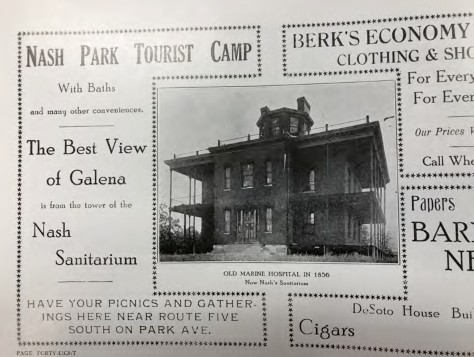
Figure 22. Nash Park Tourist Camp.
1927 ad from Galena's Century Milestone, by Florence Gratiot Bale
- reprinted by Terry Miller.
Nash held onto the property until 1941, having purchased it in December, 1911 for slightly less than $900 (Book of Deeds #99, p. 398). During the Great Depression (1929- 1941) it appeared that the property languished. Any residents were apparently renters or caretakers. But in August of 1941 a news piece announced "Normal School Property Sold:"
A. Nash has sold the property known as the Normal School to Mrs. Leta Christen who will make this her home, and also after the building is newly decorated and modern conveniences installed, will serve chicken dinners and light beverages and ice cream to the public. It is planned to improve the grounds and make an up to date picnic grounds which can be used for family reunions and picnics. (Galena Daily Gazette, 1 August 1941.)
This enterprise was short-lived, perhaps due to the coming of World War II only four months later. The next occupants were William and Leila Brownell who had been operating a small nursing home in nearby Platteville, Wisconsin. They had already purchased the Nelson Stillman mansion in 1944 (Book of Deeds #126, p. 354) for a new and larger nursing home. Only a few years later they purchased the old Marine Hospital. A notice in the Galena Advertiser in 1950 announced a picnic to be held at the site:
"Members of the V.F.W. Auxiliary...met at the Boyd store Thursday evening and were transported to Idle Acres, the home of Mr. and Mrs. W. H Brownell, where they enjoyed a picnic potluck and a social evening. Mrs. Brownell took them on a tour of the building and grounds, which she has purchased and remodeled, and opened to the public as a summer resort and hotel. Idle Acres, now easily accessible on a modern road, consists of...some of the most scenic grounds in this vicinity, and riding horses and other recreational facilities have been provided for the ten to twenty guests who can be accommodated." (Galena Advertiser, 20 July 1950.)
Near tragedy struck, however, only three months later when the paper reported a large barn fire:
"A combination tool shed and barn, about 20 by 30 feet, was destroyed by fire Tuesday afternoon on the Idle Acres Farm... The fire had complete control when the fire department was summoned, but firemen kept the flames from spreading to the main building nearby." (Galena Advertiser, 19 October 1950.)
But for unknown reasons (perhaps the time and financial demands of the Brownell Nursing Home - Stillman mansion) the Brownells sold the property in April of 1951 to Lloyd and Grace MacBeth (Book of Deeds #136, p. 505). Grace MacBeth had borrowed over $5,000 from a private party to purchase and make a few upgrades to the property.
But only a year later the property was again on the market, probably for financial reasons, but didn't sell. A realtor's ad described a "romantic old brick mansion" with a 34 foot living room, lavatory and shower on the first floor" and a full bath on the second. The building also featured eight fireplaces (Figure 23). The ad did note, however, that some repairs were required on the exterior "to put this property in condition for use as a rest haven, old folks home, school, hospital, club, summer resort or dwelling (Galena Advertiser, 30 June 1952). The description might have painted a rosier picture than was the case (Figure 24).
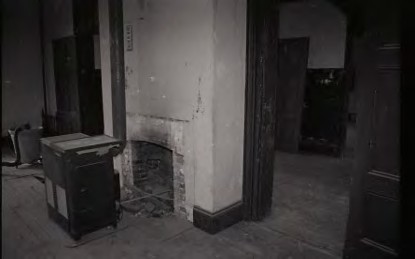
Figure 23. Marine Hospital showing one of original fireplaces.
Neg. 7 Galena State Historic Sites Office.
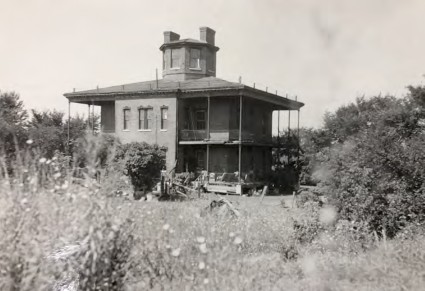
Figure 24. Back of Marine Hospital when
privately owned during early 1950s
Marine Hospital file.
Galena State Historic Sites Office.
Grace was unable to repay the loan. The paper reported that she was "reputed to have kept a large number of dogs about the place" (Galena Daily Gazette, 21 September 1956). Irrespective of the dog problem, she was also falling behind on her property taxes, which ultimately resulted in a sheriff's sale (Master's Deed Instrument #75123, 16 March 1955). The sole and successful bidder was Gus Papke of Dubuque, Iowa. He was the private party who had loaned Mrs. MacBeth the $5,418.32 to buy and improve the property. At this time the building still had its belvedere, or cupola, and beautiful porches around the exterior.
Papke wanted to recoup his investment. He determined that turning the building into apartments was the way to do it. His first order of business was to remove the cupola and then the porches:
"Recently he decided that the building could profitably be turned into living quarters. He took the cupola down last week and is now removing much of the superstructure preparatory to re-covering the building with a flat-type roof. He also plans to remove the old porches." (Galena Daily Gazette, 21 September 1956.)
A front page picture in the Gazette article showed workmen atop the roof tearing down the last of the cupola (Figure 25). An "Architectural Survey Inventory" of Galena's buildings completed in 1964 by the State of Illinois described the alterations this way: "cupola & original porch shamelessly removed" (Marine Hospital file at the Galena State Historic Sites Office). Upon project completion, there were to be six three or four room flats (undated clipping in the files of the Galena-Jo Daviess County History Museum).
The magnificent iron staircase, which ran from the basement floor all the way to the cupola, was torched off at the top to accommodate the changes.
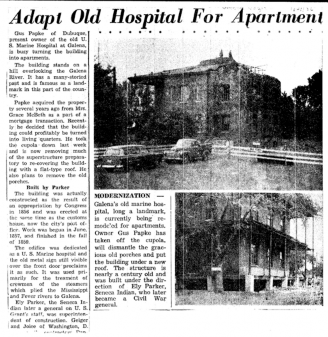
Figure 25. Cupola being removed from Marine Hospital.
Galena Gazette, 21 Sept. 1956.
Gus Papke's project was never completed. Perhaps it was a lack of financing, or enthusiasm, but for whatever reason, the building entered another period of neglect. A letter from the National Trust for Historic Preservation dated March 1, 1968 stated that it was a "handsome building" but it was "unfortunate that appropriate action to save the structure was not initiated in time (Marine Hospital file at the Galena State Historic Sites Office).
The property was purchased by Chicagoans Jack Stevens and Phillip Humphries during this time, but again, little happened. They, in turn, sold everything to John and Adelaide Clark in 1969 (Warranty Deed #122798). But once again, the novelty wore off--or the money gave out--and they sold the property to Lee and Louise Kent in 1971. The Kents, from Evanston, IL were more serious and focused in their approach.
A Galena Gazette article in 1977 reported the Kents hoped to put the old Marine Hospital on the annual Tour of Historic Homes. They were reportedly facing "the years of renovation ahead with enthusiasm" and had even engaged the services of an architect for the project (Galena Gazette, 22 September 1977). They were planning on putting a scaled down cupola back on the roof (Figure 26). They had already put in a central heating system and new plumbing. The remainder of the old corrugated iron roofing was also replaced.
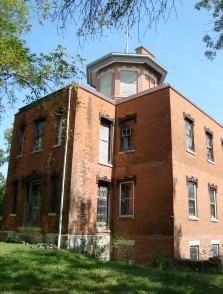
Figure 26. Marine Hospital looking northeast
with new scaled-down cupola added in the 1970s.
2017 photo by Ken Robb.
But like so many before them, their effort faltered and a quit claim deed in the Jo Daviess County Courthouse pretty well summed it up: THE GRANTOR, Lee F. Kent, divorced and not since remarried...CONVEY and QUIT CLAIM to Louise E. Kent..." the old Marine Hospital (Quit Claim Deed #184083, February 3, 1987). The property was immediately listed for sale by local realtor Ralph Benson:
"Possibly the only Marine hospital still standing in the State of Illinois... imposingly located on a high bluff overhanging the Galena River... The grounds are extensive and capable of cultivation and great ornamentation... Three levels connected by a magnificent winding Whale encrested [sic] Wrought Iron stairway. The lower level has been completely remodeled into living quarters, brick floors, modern kitchen, new heating system." (Galena Gazette, 20 May 1987.)
Before the year was out, Louise Kent sold the property to Robert Farster (Quit Claim Deed #188481, October 29, 1987), who immediately turned it over to the Sangamon Packet Company.
The Sangamon Packet Company was the creation of Dennis Trone and his brother, who had been running tourist excursion boats on the Illinois River and elsewhere. An experienced river pilot and lover of river history, Trone brought up two boats to run between Chestnut Mountain Ski Resort and LeClaire, Iowa, just north of the Quad Cities. One was the Julia Belle Swain, a modern design steam vessel, and the other was the diesel-powered Twilight, both paddle wheelers (personal knowledge of Daryl Watson, who had the privilege of knowing Trone for a number of years). The Marine Hospital became, at times, his home away from home during the boating and tourist season.
But six years later, Trone's corporation sold the property to Mary Alice Bernard, Terry Fisher and Carolyn Dodds (Corporation Warranty Deed #225243, July 30, 1993). This was a serious group that really wanted to restore the building. They needed, however, to come up with a plan that would make it economically feasible. With the Marine Hospital and 11 acres to work with, the group envisioned a resort as being the best option. The hospital would have to accommodate ten units plus a manager's apartment in a 6,500 square foot building (North Western Gazette, 30 July 1993).
There was only one problem--the Galena zoning ordinance. It called for any resort developments to be located on a minimum of 50 acres. And Bed and Breakfast homes, another option, were restricted to a maximum of five units. Also, there would have to be a rezoning to auto-oriented from agriculture--and there was no good auto access to the Marine Hospital. Five neighbors all opposed the request. The zoning board rejected the application (North Western Gazette, 30 July 1993), leaving everything up in the air.
The group continued to explore options and hosted a number of events at the Hospital to showcase its importance and potential. Perhaps the largest was an open house for anyone interested in the history and future of the Hospital. It was held one evening in September and over 200 people attended (North Western Gazette, 10 September 1993). Comments were favorable but no one stepped forth with a workable plan on how to move forward.
The effort faltered and then fell apart. Terry Fisher and Carolyn Dodds quit claimed their share to Mary Alice Bernard (Deed Instrument #242455, 11 January 1996) who then sold the property to Frank Budreck of Libertyville, Illinois the same day (Deed #242456).
Budreck has maintained the property since that time but has had it on the market for a number of years. As of November, 2020 he appeared to have a buyer.
An Uncertain Future
Galena's Marine Hospital, completed in 1859, is one of Galena's most historic buildings. It has not only local and regional significance but also national significance. It represents the first effort by the U. S. federal government to take care of the needs of sailors and boatmen from 1798 onward. It was funded in part with a deduction from every employee's wages of twenty cents per month. The rest was picked up by the federal government. Given the importance and reliance of the new nation on goods and services provided by rivers, lakes and ocean commerce, few complained.
Prior to the Civil War, roughly thirty marine hospitals were constructed, most along the East Coast, but then increasingly along inland rivers and lakes. Of the latter, only the hospitals at Louisville and Galena remain. (See Appendix A) Unfortunately for the Galena hospital, it was never able to realize its full potential. A civil war, a silting up little stream, railroads, and changing trade and commercial patterns conspired against the effort. It lasted only six years, treating relatively few patients during that time.
Sadly, Galena's Marine Hospital has been on an up and down ride ever since, mostly down. It has been plagued by good but ineffective intentions from its first days right down to the present. Lack of maintenance and misdirected alterations have occurred; the worst coming in the 1950s when the cupola, or belvedere, along with the porches were removed entirely from the structure. Given the complexity of construction and coherence of design, one might as well have let an auto mechanic touch up the Mona Lisa.
The Hospital was named to Landmarks Illinois' annual Ten Most Endangered Historic Places list in 2014 (Galena Gazette, 9 April 2014). In naming the structure to its Ten Most list, the organization hoped that it would help in "finding a viable plan for its rehabilitation and reuse." After 160 years, that remains the hope. (Figure 27.)
Acknowledgements
In 2019, The Galena Foundation initiated an effort to publicize the plight of a number of historic properties in town that were in danger of disappearing. One of the results of their efforts was a report on the history and condition of the McGovern-Delihant House located at 901 Fourth Street. This report on the old Marine Hospital deals with a different type of building, one that started out as a federal property in 1859 and six years later fell into private hands. But the story has many similarities and many people helped in the compilation of this history.
In no particular order, thanks go to Karen Zehr and the Recorder's Office at the Jo Daviess County Courthouse. She made quick work of tracking down (or showing how to find) deeds and property transactions over a 160 year period. The Galena-Jo Daviess County Historical Society was also very helpful, and special thanks go to volunteer Kris Chapman, who helped scour their collections for information on the Marine Hospital. An even more serious mention must be made of the Historical Collections Room at the Galena Public Library. Their materials are always critical to a report such as this. They have an incredibly dedicated group of local historians: historical librarian Steve Repp helped whenever and wherever he could. Help was also received from volunteers Tim Doser, Craig Albaugh, and Dale Glick, who went out of their way to provide pertinent leads on the Hospital. Craig's efforts in collecting for the library digital copies of early Galena photographs is nothing short of remarkable. And Tim kept providing old newspaper articles--and photographs--too numerous to mention.
The City of Galena staff also offered valuable assistance, particularly Building Inspector Jonathan Miller with his building department files. And thanks also to various individuals, to numerous to mention, who helped with various leads and bits of information. And special thanks to Galena Foundation Board member Beth Baranski who helped at various points along the way, most especially with the final phase of proofing, editing and printing.
Special mention must be given to the Galena State Historic Sites Office and site manager Terry Miller and curator and interpreter Jamie Loso. They had by far the most voluminous files and photos on the Hospital and gladly gave access to them all. Their help was invaluable to the final report.
But most of all, a huge thanks to the Galena Foundation and all of its directors for believing in Galena and the value of each and every bit of its history and architecture.
Daryl Watson, Historical Researcher
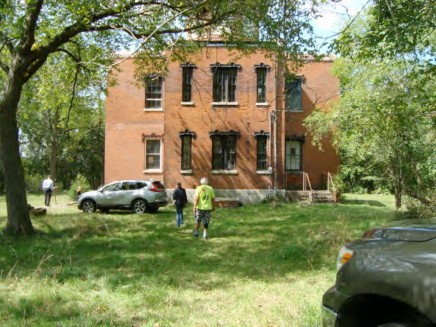
Figure 27. Back of Marine Hospital looking west
-landmark building still awaiting restoration.
2017 photo by Ken Robb.

